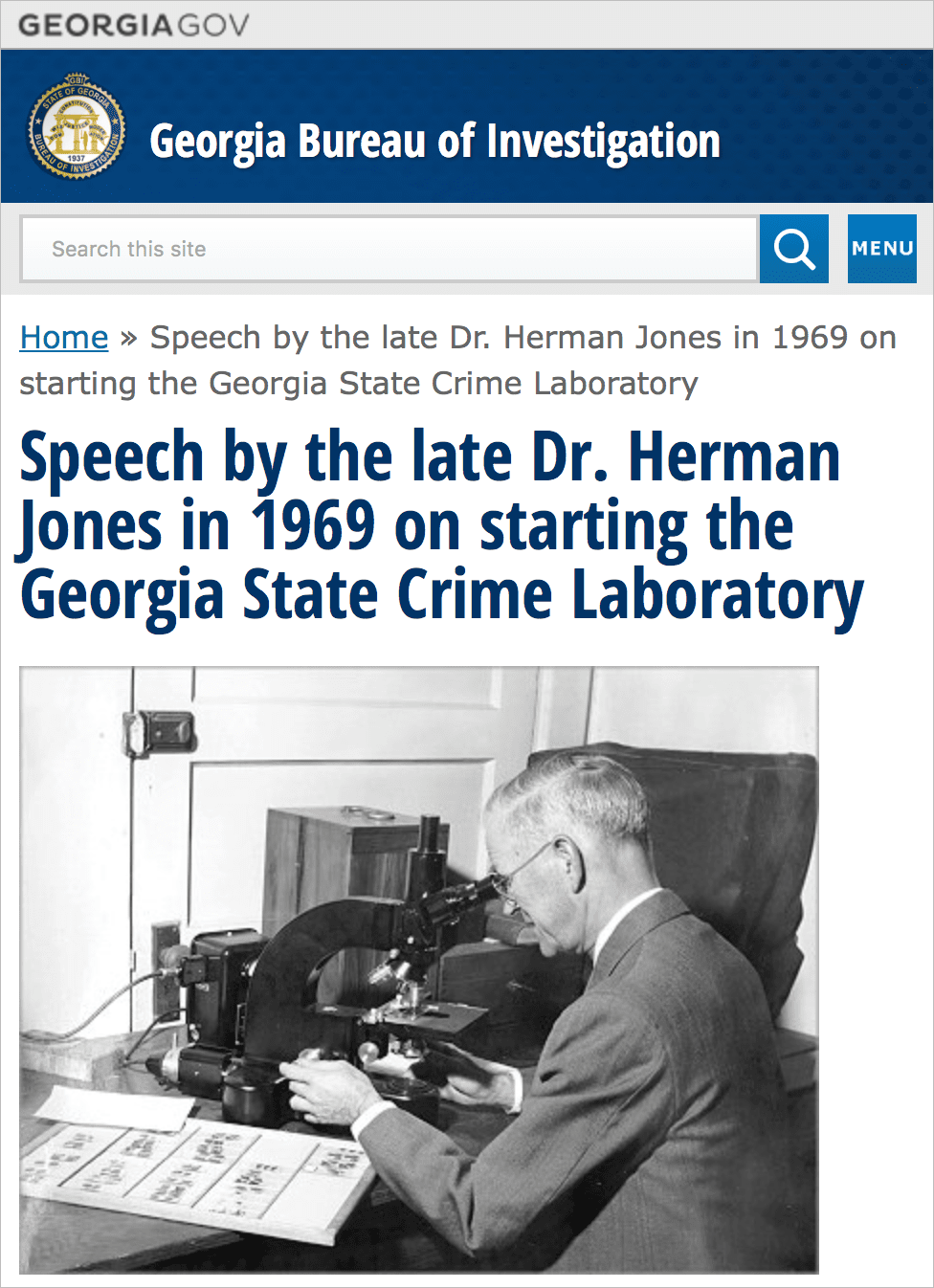Understanding the Georgia’s Criminal Justice System
Georgia’s Criminal Justice system is responsible for providing public safety by deterring and preventing crime, punishing offenders, and reintroducing those who have served their time back into the community. The criminal justice system is based on the body of laws that define crimes and offenses, and specify what punishments are appropriate for those crimes.
There are two types of crimes that are defined by Georgia State law: felonies, misdemeanors.
- Felonies are usually the most serious crime. An individual that is convicted of a felony may face jail time, though that time may be spent in either a county jail, or a state prison. Felonies cover crimes that are considered both serious, and/or violent. Commonly known felonies include murder, robbery, rape, burglary of a residence, and assault. Felony punishments vary in harshness depending on the nature of the crime, discretion of the court, and the offender’s criminal history.
- A misdemeanor is typically a less serious crime, and common punishments include probation, county jail time, fines, or a combination of all three. Common misdemeanors include assault, theft, and public drunkenness.
 CBS remembers the case of Gideon v. Wainwright
CBS remembers the case of Gideon v. Wainwright
Georgia’s Criminal Justice System has a multi-stage processing structure. Those stages are the booking, initial appearance, preliminary hearing, indictment, and arraignment.
- After arresting a suspect, the offender is booked at the station of the law enforcement agency that conducted the arrest. Bookings are a recording of names of the individuals that are accused of committing a crime, and usually involves additional information about the incident. The offender is photographed, fingerprinted, and is allowed a phone call before spending at least one night in jail.
- The initial appearance is when the offender appears before a judge to hear and understand what they are being accused of, in line with legal due process. The initial appearance usually takes place within 72 hours of an arrest, but if a warrant was not used during the arrest, that timeline is reduced to just 48 hours. The judge will inquire if the accused has a lawyer, and determine if the offender is indigent. The judge may appoint an attorney if the offender is determined to be unable to procure one. Originally, the U.S. Constitution did not guarantee an indigent person the right to be represented by an attorney. This changed in 1963 after the U.S. Supreme Court decision in Gideon v. Wainwright, in which the court held that the state must provide an attorney to any indigent person accused of a crime that is a felony. The accused may waive the right, but it is provided. In 1972, this right was extended to any case where the accused may face imprisonment, regardless of the severity of the crime.
The preliminary hearing is held in a magistrate court, and its purpose is to determine whether there is probable cause to believe a crime has been committed, whether the defendant is the person who commited the crime, whether the charges are appropriate to the act alleged, and whether the crime constitutes either a felony or a misdemeanor. In the hearing, the court is not concerned about a guilty sentence. Rather, they want to determine if there is enough evidence to prosecute. Both the defense and prosecution cite evidence during the preliminary hearing, with the defense trying to show a lack thereof, while the prosecution tries to show there is enough to prosecute. If probable cause is established, and the case involves a misdemeanor, the case is forwarded to the appropriate court and a trial date is set. If a felony is involved, the case is forwarded to the district attorney for presentation to the grand jury.
During the indictment, the prosecution attempts to prove that the defendant is guilty, but there are numerous conditions. In Georgia, all capital felonies must be presented to a grand jury, though certain less serious felonies like shoplifting, forgery, or breaking into an motor vehicle are exempt. In these cases, the district attorney may file an accusation by providing a document with the court that allows the case to proceed. This allows for a swift case, and eliminates the need for witnesses. Yet even if the case does not proceed to a grand jury, it is still up to a grand jury to decide whether or not to indict the alleged criminal.
- In Georgia, grand juries are made up of 16 to 23 registered voters from the county in which they serve. Their responsibility is to determine whether or not to indict people who are brought before them by the district attorney. Once they have decided if they have heard enough evidence, the grand jury decides whether they will issue a true bill, or a no bill. True bills are when the accused is formally indicted and charged with the crime. No bill means the jury felt that there was not enough evidence to convict.
Finally, there is the arraignment. The arraignment is held in either a state or superior court, and is a formal hearing in which the judge reads the charges to the accused. The accused is asked whether they plead guilty, not guilty, or nolo contendere (no contest.)
[INSERT VIDEO HERE] An example of an arraignment. Nydia Tisdale of Dawson County was accused of obstruction of an officer for exercising her First Amendment rights of Free Speech and Free Press while video recording an advertised campaign rally with Georgia Governor Nathan Deal at a pumpkin farm.
-
No contest essentially means that the defendant will not attempt to prove their innocence. It is most common in traffic cases.
-
If the defendant pleads guilty, the court must be satisfied that such a plea is reasonable and freely given under no duress. The jury must also agree that the person is guilty as charged in order to render a guilty verdict. If the offender pleads guilty, a judge may give a lighter sentence, especially if there are mitigating circumstances in the case. In these cases, there is usually some reason for the accused to have committed the crime, and as a result the judge may be lenient. Conversely, aggravating circumstances can result in a stricter sentence.
-
If the defendant pleads not guilty, then it is the prosecution's duty to prove the contrary. The fundamental concept of the American judicial system is that a person is innocent until proven guilty. Practically what this means is that a defendant does not have to prove anything. They do not have to take the stand in their own defense, and the prosecutor cannot comment or use this act in their prosecution. The most common defense is to deny the charges, with additional support from witnesses and other forms for defense to support that denial.
- Alibis are when a defendant must prove that they were somewhere else besides the scene of the crime.
- Coercion is when the defendant claims that the crime was committed to avoid threats of harm or death. Notably, this defense is not effective when murder is the charge.
- Delusional Compulsion is when the crime was allegedly committed under delusional circumstances. A delusion is a falsehood that the offender believes to be true, and is typically associated with mental disease or injury.
- Entrapment is when the defendant claims that the crime would not have occurred had they not been tricked into doing it by a law enforcement representative. This is most common in drug cases.
- Insanity is simply the defense of mental incapacitation causing an offender to commit a crime.
- Involuntary Intoxication specifies crimes that occured after the offender was either tricked or forced into drinking inebriates before commiting the crime. An example of this would be a DUI offense that occured after someone drank spiked punch without knowing it contained alcohol.
- Mistake of Fact is when the defendant claims that the crime was committed because of a mistaken view of the situation. An example of this would be accidental injury of someone entering your house in the belief they were an intruder.
- Self-defense is when the defendant claims that by not committing the crime, they instead would be subject to injury or death.
 Wilkes County Courthouse, which foundations were first built in 1785, was Georgia’s first courthouse. It continues to operate today as Wilkes County’s head of justice.
Wilkes County Courthouse, which foundations were first built in 1785, was Georgia’s first courthouse. It continues to operate today as Wilkes County’s head of justice.
From 1733 to 1937 law enforcement in the state was the responsibility of local municipalities and governments. In March of 1937 however, Governor E.D. Rivers of the General Assembly passed Act 220 that established the Department of Public Safety, Georgia's first statewide law enforcement agency.
Two divisions were formed in the department: the uniform division, and the plainclothes division. The uniform division consists of Georgia State Patrol officers who patrol the roads and cities of Georgia as a general law enforcement body.
 Speech by Dr. Herman Jones in 1969 on starting the Georgia State Crime Lab.
Speech by Dr. Herman Jones in 1969 on starting the Georgia State Crime Lab.
The plainclothes officers work within the Division of Criminal Identification, Detection, Prevention, and Investigation. The first agent to serve was Arthur L. Hutchins. With the creation of the Department of Public Safety, any criminal offense made on state property or on state highways would come under their jurisdiction. In 1940, the plainclothes division changed their name to the Georgia Bureau of Investigation, mirroring the federal branch of investigators (FBI) that operated in the same way.
In 1952, Georgia established the nation’s second statewide crime laboratory when the Fulton County Crime Laboratory was reformed as the State Crime Laboratory. Dr. Herman Jones, who introduced forensic laboratory work to Georgia in the 1940s, continued his work at the new laboratory.
In 1972, Governor Jimmy Carter commissioned a task force to establish a master plan to implement a criminal justice information system for Georgia. In June of 1972, Carter signed an executive order creating the Georgia Crime Information Center (GCIC.) In the same year, Carter proposed extensive changes in the structure of the executive branch of the state government, which lead to the Executive Reorganization Act of 1972. This act established the organizational framework of the GBI that still exists today.
The framework consists of three divisions: The Investigation Division, the Division of Forensic Sciences at the State Crime Lab, and the Georgia Crime Information Center.
